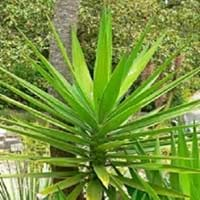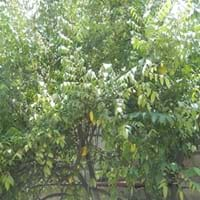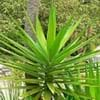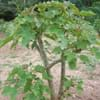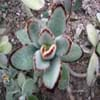Life Span
Perennial
Perennial
Origin
Southwestern United States, Mexico
Southeastern Asia
Types
Yucca aloifolia 'Purpurea' , Yucca aloifolia
Not Available
Habitat
coastal environs, Coastal sand dunes, mild coastal areas
Subtropical climates, Tropical regions
USDA Hardiness Zone
7-9
10-14
Sunset Zone
2a, 2b, 3a, 3b, 4, 5, 6, 7, 8, 9, 10, 11, 12, 13, 14, 15, 16, 17, 18, 19, 20, 21, 22, 23, 24
H1, H2, 22, 23, 24
Habit
Rosette/Stemless
Arching/Fountain-shaped
Minimum Height
Not Available
Minimum Width
Not Available
Flower Color
White
Pink, Rose, Violet
Flower Color Modifier
Not Available
Bicolor
Fruit Color
Brown
Yellow, Orange, Light Yellow, Lemon yellow, Yellow green, Gold
Leaf Color in Spring
Blue Green
Green
Leaf Color in Summer
Blue Green
Green
Leaf Color in Fall
Blue Green
Green
Leaf Color in Winter
Blue Green
Light Green
Leaf Shape
long with sharp edges
Oblovate
Plant Season
Spring, Summer, Fall, Winter
Spring, Summer, Fall
Sunlight
Full Sun
Full Sun, Partial Sun
Growth Rate
Very Slow
Slow
Type of Soil
Loam, Sand
Loam, Sand
The pH of Soil
Acidic, Neutral, Alkaline
Acidic, Neutral
Soil Drainage
Well drained
Average
Bloom Time
Late Spring, Early Summer
Early Spring, Spring, Late Spring, Early Summer, Summer, Late Summer
Tolerances
Drought, Salt
Frost
Where to Plant?
Ground
Ground
How to Plant?
Cuttings, Divison
Seedlings, Stem Planting
Plant Maintenance
Medium
Low
Watering Requirements
Keep the Soil well drained, Needs very little water
Average Water Needs, Requires watering in the growing season
In Summer
Lots of watering
Lots of watering
In Spring
Moderate
Moderate
In Winter
Average Water
Average Water
Soil pH
Acidic, Neutral, Alkaline
Acidic, Neutral
Soil Type
Loam, Sand
Loam, Sand
Soil Drainage Capacity
Well drained
Average
Sun Exposure
Full Sun
Full Sun, Partial Sun
Pruning
Remove damaged leaves, Remove dead branches, Remove dead leaves
Prune in winter, Remove damaged leaves, Remove dead leaves
Fertilizers
All-Purpose Liquid Fertilizer
Fertilize every year
Pests and Diseases
Leaf spot, Scale
Red blotch
Plant Tolerance
Drought, Salt
Drought
Flower Petal Number
Single
Single
Foliage Texture
Bold
Medium
Foliage Sheen
Matte
Glossy
Attracts
Butterflies, Not Available
Birds, Butterflies
Allergy
Unknown
Kidney Stone
Aesthetic Uses
Borders, Cottage Garden, Wild gardens, Woodland margins
Not Used For Aesthetic Purpose
Beauty Benefits
Not Available
Not Available
Environmental Uses
Air purification
Air purification, Food for birds, Food for insects, Nesting sites for birds, Prevent Soil Erosion
Medicinal Uses
No Medicinal Use
Anti-oxidant, Antioxidants, High blood pressure, Nutrients
Part of Plant Used
Not Available
Fruits, Seeds
Other Uses
Beneficial species for attracting pollinators
Oil is used in perfume, soaps, creams, etc., Used As Food, Used for its medicinal properties
Used As Indoor Plant
No
No
Used As Outdoor Plant
Yes
Yes
Garden Design
Rock Garden, Wall, Wildflower
Edible, Fruit / Fruit Tree, Tropical
Botanical Name
Yucca gloriosa
AVERRHOA carambola
Common Name
spanish dagger
Carambola, Starfruit
In Hindi
Spanish Bayonet
carambola पेड़
In German
Spanish Bayonet
Sternfrucht Baum
In French
Spanish bayonet
arbre carambole
In Spanish
Spanish bayonet
árbol de carambola
In Greek
Spanish bayonet
carambola δέντρο
In Portuguese
Spanish bayonet
árvore de carambola
In Polish
Spanish bayonet
karambola drzewo
In Latin
Spanish bayonet
carambola ligno
Phylum
Magnoliophyta
Tracheophyta
Class
Liliopsida
Magnoliopsida
Order
Liliales
Oxalidales
Family
Agavaceae
Oxalidaceae
Clade
Angiosperms, Monocots
Angiosperms, Eudicots, Rosids
Tribe
Not Available
Not Available
Subfamily
Agavoideae
Not Available
Number of Species
Not Available
Season and Care of Spanish Bayonet and Carambola
Season and care of Spanish Bayonet and Carambola is important to know. While considering everything about Spanish Bayonet and Carambola Care, growing season is an essential factor. Spanish Bayonet season is Spring, Summer, Fall and Winter and Carambola season is Spring, Summer, Fall and Winter. The type of soil for Spanish Bayonet is Loam, Sand and for Carambola is Loam, Sand while the PH of soil for Spanish Bayonet is Acidic, Neutral, Alkaline and for Carambola is Acidic, Neutral.
Spanish Bayonet and Carambola Physical Information
Spanish Bayonet and Carambola physical information is very important for comparison. Spanish Bayonet height is Not Available and width Not Available whereas Carambola height is 610.00 cm and width 610.00 cm. The color specification of Spanish Bayonet and Carambola are as follows:
Spanish Bayonet flower color: White
Spanish Bayonet leaf color: Blue Green
Carambola flower color: Pink, Rose and Violet
- Carambola leaf color: Green
Care of Spanish Bayonet and Carambola
Care of Spanish Bayonet and Carambola include pruning, fertilizers, watering etc. Spanish Bayonet pruning is done Remove damaged leaves, Remove dead branches and Remove dead leaves and Carambola pruning is done Prune in winter, Remove damaged leaves and Remove dead leaves. In summer Spanish Bayonet needs Lots of watering and in winter, it needs Average Water. Whereas, in summer Carambola needs Lots of watering and in winter, it needs Average Water.
